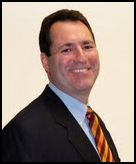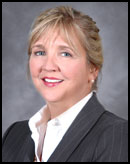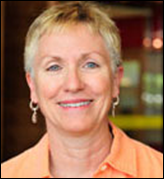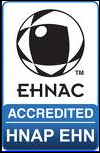We asked several vendors a series of six questions related the federal government’s recent announcement on the latest proposed meaningful use definitions and EHR certification criteria.
Which criteria do you expect to be changed after the comment period?
Allscripts – Glen Tullman, CEO

Just to clarify what we’re discussing, there are two rules under consideration within HHS – the IFR and the NPRM. The Interim Final Rule (IFR) relates to the standards, implementation and certification requirements – in other words, what our Electronic Health Records need to be able to do in order to be certified. We are making recommendations for changes which will include the following:
- Requiring use of a patient portal to provide patients with clinical summaries of an office visit . . . why should we wait until 2013 to use portals when much of the population already accesses portals for all kinds of services every day?
- Requiring use of the UNII standard for the management of medication allergies in the 2011 criteria, rather than waiting for 2013. We are convinced this would dramatically increase quality, and we are not alone. Why not press the vendors to make these changes now?
- A stricter approach to problem lists (by allowing only SNOMED CT and not ICD-9). This would require changes, including in our own systems, but we know that a single standard would improve patient safety and the quality of healthcare. Again, if we want a better healthcare system, let’s demand it from our vendors.
- Adoption of the new Health Quality Measures Format (HQMF) that will make quality measures and Clinical Decision Support interoperable. Interoperability is key to allowing our physicians access to the information they need to deliver the appropriate care and avoid duplicate care. Imagine if bank ATMs didn’t interoperate? It would be impossible to provide access and reliable protections for our money. Why not demand the same standards of care and quality for our health care?
- Disallowing modular approvals of EHR functionality in favor of a more comprehensive approach to certification. We’re opposed to the modular approach because we believe it could endanger patient safety. While we await the next IFR on certification – which we hope will shed additional light on this matter in the coming weeks — we are very concerned that taxpayers might be in the position of subsidizing solutions that simply don’t work and/or don’t work together. A patchwork of components can never provide the rigor of testing, integration or single-source support and service that a comprehensive solution provides. The Electronic Health Record is not a hobbyist PC built in a neighbor’s basement for playing computer games; it’s a tool that helps in the delivery of the most important profession on Earth – medicine. Imagine if crash testing for our automobiles, another safely issue, was done piecemeal rather than comprehensively. What’s most important is how the components of a system work together.
The Notice of Proposed Rule Making (NPRM) covers the broader Meaningful Use requirements and is a very long and nuanced document that describes what our clients will have to do to earn the ARRA incentives. We definitely expect some changes to the NPRM, especially in the areas where HHS clearly welcomed additional comments. An example of this might involve the broad scope of clinical quality measures to be submitted by providers or the eligibility criteria for providers who perform services in a hospital setting.We take the position that physicians who provide ambulatory services in a hospital setting should be able to qualify for the HITECH incentives. We suggest that HHS needs to take a closer look at defining criteria for appropriately excluding physicians who work with inpatients from those who are doing outpatient work in a hospital-owned facility. To accomplish this, we suggest Medicare take into consideration whether a CPT claims code is for outpatient services, even if the place-of-service code indicates a hospital setting.
Approximately 25 percent of physicians operate in an environment that is in some way tied to a hospital, and to exclude such a large group of physicians from the HITECH incentives would run counter to the spirit of the legislation and its goals.
Overall, we applaud the difficult work that brought us to this point and we have been, from Day 1, supporters of the concept of meaningful use. Now we have to aggressively push vendors to make their systems better (they will if the Government demands it) and strongly encourage our physicians to adopt these systems, which the ARRA incentives and penalties are doing.
eClinical Works – Girish Kumar Navani, CEO and co-founder

It will be no surprise if any criteria are looked at in order to preserve increased adoption. We only hope that the final criteria do not compromise the goal of creating prevention-oriented EHR systems.
Eclipsys – Philip M. Pead, President and CEO

We expect the lack of proven and implementable Quality Reporting standards to result in a dramatic reduction in Stage 1 requirements in this area.
e-MDs – Michael Stearns, President and CEO

Since the IFR becomes effective 30 days after its publication date in the Federal Register (Jan. 13), we do not anticipate that the certification criteria will be modified significantly for 2011, and that feedback will be used to guide 2013/Stage 2 criteria. However, we do expect additional clarification of the criteria in preparation for the certification process. Having participated in the CCHIT process, we realize the challenges involved with interpreting the test scripts, thus further clarification and definition will hopefully result from the comment process.
We also expect further elucidation from CMS based on the public comments to the NPRM (the second document released in conjunction with the certification requirements from ONC). We do not anticipate that any comments received will substantially alter the criteria and that attaining Stage 1 meaningful use will be relatively straightforward for our current and new users.
GE Healthcare – Vishal Wanchoo, President and CEO, GE Healthcare IT

I would expect we might see some change in areas such as:
- The pace and level of CPOE implementation
- Fewer HIT and quality measures
- More clarity on the definition of hospital-based physicians
- Technical refinements and corrections for the standards and certification criteria
- More precise definitions and guidelines based on submitted comments
- More clarity on interoperability expectations and standards
InteGreat, a MED3OOO Company – Tom Skelton, President

We expect that two criteria will get a lot of scrutiny from a physician compliance standpoint. The proposed requirement for 80% CPOE compliance in an ambulatory setting versus 10% in a hospital setting seems not only unfair, but may not address where the most costly errors occur. We would like to see this be modified to be equal in all settings and backed into on a gradual scale.
As physicians read through these measures, some of these scenarios may not stand out. We expect though that when they begin to apply them to what they do every day, there will be many questions. Ultimately, they are going to look to their EHR vendor to supply a solution that will allow and encourage them to comply. Solo physicians and small groups will need to look for products that are intuitive, as well as easy to implement and use. There will be a shortage of time and talent to implement these systems in the next few years. Therefore, products that are not operational in a short period, will place physicians in a position where they cannot comply. The hard fact is, meaningful use is exactly that…USE. It will be up to the physicians and how they use the EHR, which will ultimately qualify them for the stimulus money. That will require behavior changes for adoption, which in some cases, may be hard to make.
McKesson – Dave Henriksen, SVP and GM, Physician Practice Solutions

We hope that the agency will be responsive to public comments to ensure that the gaps are closed and the ambiguities are clarified in the final rule.
NextGen Healthcare – Scott Decker, President

We do not expect significant changes after the comment period. However, we do want to give our clients and the public the opportunity to voice concerns and suggestions for the best end result. NextGen Healthcare has introduced our Community Forum as a place where people can join with us in commenting on some basic issues around the schedules for achieving meaningful use and ideas concerning the rolling quarter by quarter compliance program in 2011. NextGen Healthcare’s leadership and client advocacy committee has accepted the responsibility to lead this exchange.
Sage – Lindy Benton, Chief Operating Officer

Unless there is a groundswell of nearly-unanimous public commentary on one or the other of the criteria, we don’t see much changing, especially given the fact that the initial recommendations of the HIT Policy Committee were themselves a result of widespread collaboration between multiple stakeholders.
While Sage plans to submit commentary for the purpose of eliciting further clarification, overall we endorse the NPRM and IFR in their current form as a balanced approach to meaningful use based on the current state of healthcare technology and the starting point for most physicians.
SRSsoft – Evan Steele, CEO

Tragically, we do not expect much to be changed by input made during the comment period. All of the major stakeholders surrounding this issue have engaged in various ways, both publically and privately. Points of view have been exchanged, debated, and decided upon. Many of the provisions and criteria in the meaningful use document are no different than they were much earlier. I can’t see today how any comments from any single or set of stakeholders will modify the criteria much from where it is.
Our position is that the criteria, as they are set now, are doomed to a high risk of failure, especially for the high-performance providers. One EHR specification and one set of criteria for all specialties is like trying to have one manual and specification for all aircraft—cargo, passenger, tanker, bomber, glider, Cessna, etc.
SRS will not seek to become a certified product because it would be such a disservice to our clients and future clients. We haven’t found any of our high-performance physician clients willing to make the trade-off of lost productivity for government compliance. Our clients do not want to have a “certified” solution, designed by government committees for the purpose of being able to demand any and all data from every one of their providers…especially when it will have a hugely negative impact on provider performance. They want a highly efficient, productivity-focused EMR that is accessible from anywhere, can be learned in a morning, and immediately improves physician and office productivity and patient care.
The history of EHRs up to this point has been very inconsistent . . . some successes and many, many failures—especially among specialists, for whom this ARRA program does a great disservice. Offering incentives will not help a physician “meaningfully use” an EHR that he/she could not use successfully before. The government’s program has done nothing to change the fundamental problems with the products that have caused the 50%–80% failure rate (recently reported by the lead author of the Milbank Quarterly study on EHR use). The government conceded early in this process that there is a lack of evidence that traditional EHRs reduce costs and improve care—Dr. Blumenthal said in September that he “anticipates an enormous amount of research will be needed to determine the effectiveness of health information technology at the same time as it is widely deployed under the stimulus.” There were no landmark studies supporting the efficacy of EHRs in physician practices then, and there still are none now. The Proposed Rule acknowledges that only 4% of physicians have been able to fully adopt an EHR. Some primary-care physicians are finding some success with the traditional EHRs, but most physicians—and particularly specialists—have not, and will not, be able to do so.
If we at SRS sound like contrarians in the EMR adoption subject, it is only because we feel that the full weight and gravity of the government program is going to cause a lot of medical practices a great deal of pain. The only suggestion I can make is this: I would like the government to acknowledge that the current criteria for meaningful use was not intended for and does not apply to specialists. Absent this change, many specialists will have to choose from among products that are certified, and for most of them it will be overkill and unworkable.
My advice to those who implement and use products and attempt to comply with “certification” requirements: be prepared not only to not qualify for the promised incentives, but also for a negative impact on office productivity and exposure to substantial financial harm.























The article about Pediatric Associates in CA has a nugget with a potentially outsized impact: the implication that VFC vaccines…